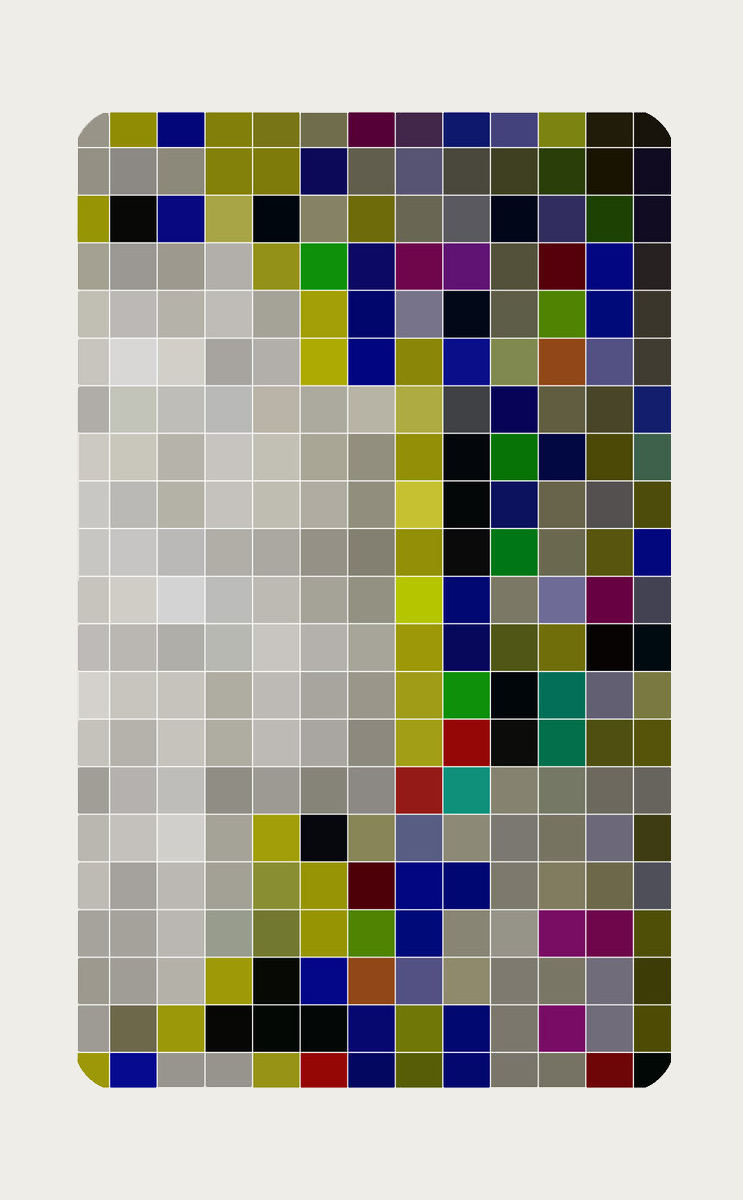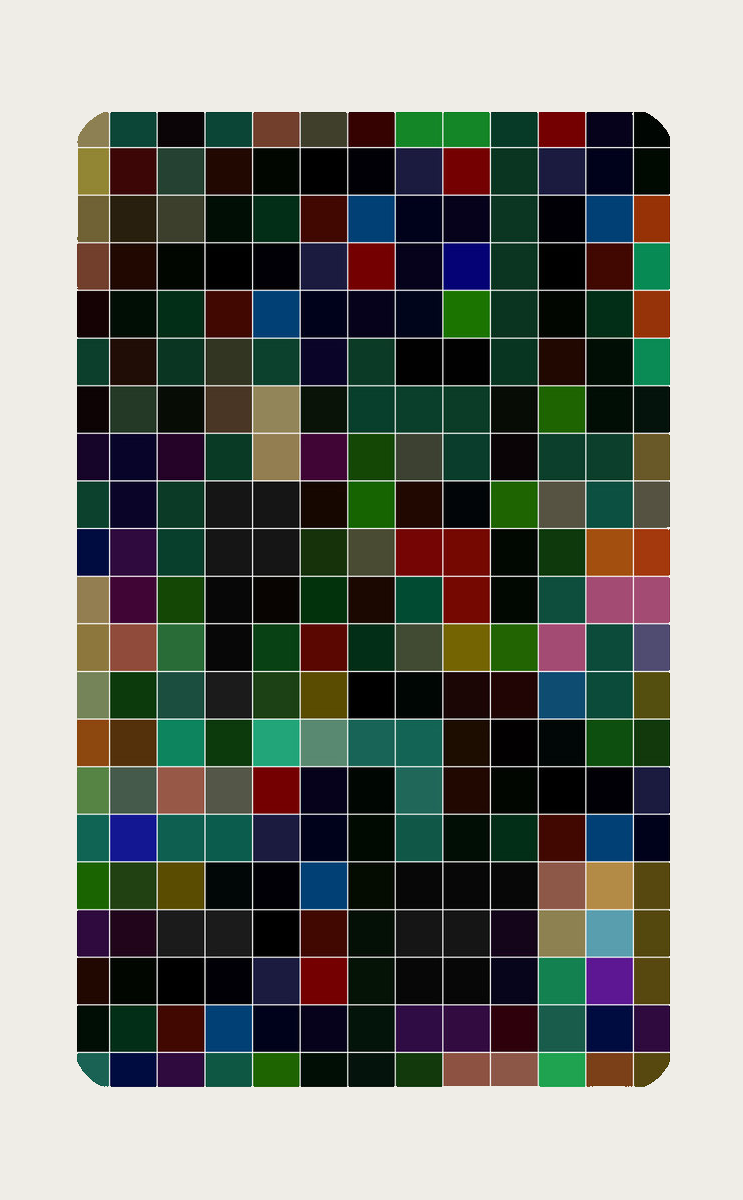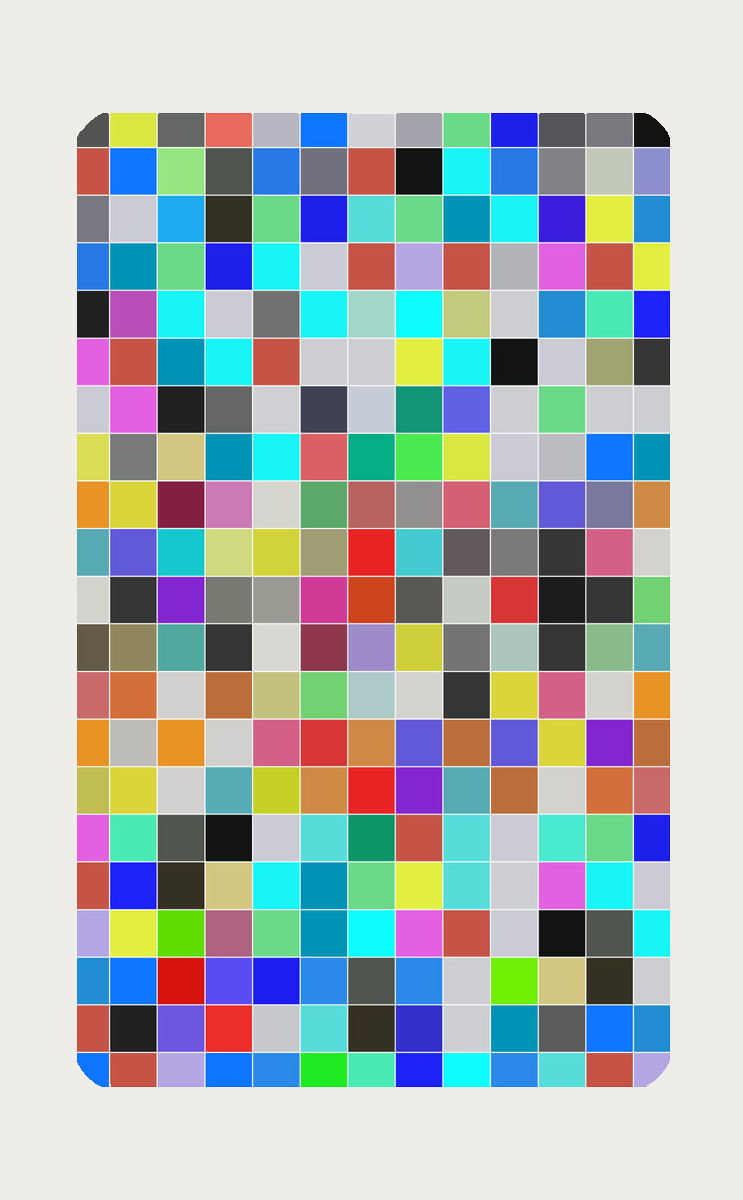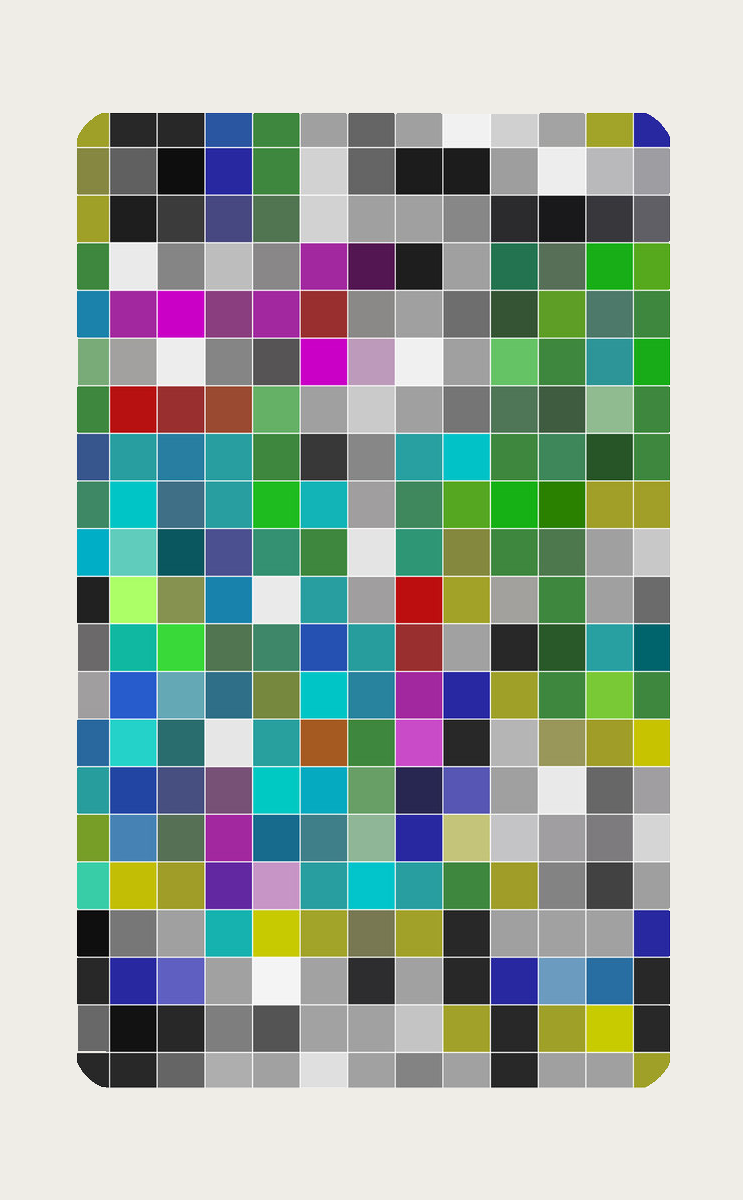LOST GRIDS, OR HOW TO EXPLAIN DIGITAL MEDIA TO A DEAD SOCIALIST >
[2018 - Present]
< Short Story >
The project comprises a generative mechanism built from an artistic misuse of digital code. A two-step: Images and texts are appropriated from the cultural archive and coupled to form networks of obliquely associated image-text pairs. A text is then selected from each network and entered directly into the underlying code-bed of the image with which it has been paired. A rupture results in the image, and from this glitch a grid is extracted and scaled up. The relationship between grid as surface and network as depth forms the project's conceptual core:
The essence of surface and depth:
incommensurability;
that is to say,
radical ornamentalism and radical obscurantism.
The Lost Grids project to-date has yielded prints, artist books, video installations, and performance-based work (samples below).
Detail: Grid <000_MARX_BEARD> (Foreground: print in vitrine display case. Background: projection loop)
LOST GRIDS >
Project manifestation as an artist book.
22.5 cm x 30.5 cm
Enclosure for six booklets, one for each «lost grid» and a sixth presenting the loose prints (in A3) of the five grids (slide show below).
Acquisition by MACBA Archive (Barcelona Museum of Contemporary Art).
Catalogue entry: Collecció MACBA, Centre d’Estudis i Documentació
NOVELLA_DEL_GRASSO (2023)
[Fourth of five Lost Grids]
Source Material >
Image-Text Pairing: a perspective drawing (Andrea Pozzo) and a tale of Filippo Brunelleschi
Anamorphic perspective drawing (Andrea Pozzo, 1693)
[Perspective Experiment]
After Filippo Brunelleschi
(Early 15th Century)
« Manetto, known as il Grasso, was prosperous and good-natured, but one day had the misfortune of incurring Filippo’s ire after missing a social gathering. Never one to resist retaliation, Filippo resolved to exact his revenge for this perceived slight by persuading a wide cast of characters to convince Manetto that he had metamorphosed into someone else: a well-known Florentine named Matteo. »
Ross King, Brunelleschi’s Dome (2000)
Novella_del_Grasso [resulting manifestation of text-image intervention as a grid print] >
Digital print mounted between glass and aluminum
60 cm x 85 cm
HEXBOOKS >
The underlying hexadecimal code of the resulting Lost Grids have been formed into «Hexbooks», each made of 500+ pages of loose-leaf sheets. With these books, some preliminary experiments with performing the code have been hatched: Hex Performance.
Project manifestation as 500+ page books of hexadecimal code.
SELECT-ALL >
In this manifestation (see below), the hexadecimal code is presented in a linear format without line-breaks, abstaining from the necessary discontinuities found in code production, paragraphing, and poetic enjambment. One here encounters the impossibility of reading and viewing at the same time – that is, code as text and as image.
SWATCHBOOKS (videos) >
After the grid squares are organized as a digital book, using the phi ratio for design, these books are then converted into video loops that shuffle through the variegated pages.
Transformed from Lost Grids: <Marx's Beard> swatchbook.
Transformed from Lost Grids: <Arrival of the Train> swatchbook.
Transformed from Lost Grids: <The House Is Black> swatchbook.
Transformed from Lost Grids: <Novella del Grasso> swatchbook.
Transformed from Lost Grids: <Portolan Orifice> swatchbook.
HEXBOOKS (videos) >
Below are videos of the 500+ page Hexbooks (comprising the code that undergirds each grid) scrolling as videos.
Transformed from Lost Grids: <Marx’s Beard> hexbook.
Transformed from Lost Grids: <Arrival of the Train> hexbook.
Transformed from Lost Grids: <The House Is Black> hexbook.
Transformed from Lost Grids: <Novella del Grasso> hexbook.
Transformed from Lost Grids: <Portolan Orifice> hexbook.






